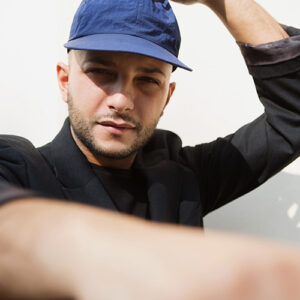Throughout your career as an independent curator, you have collaborated with a wide range of artists and exhibition spaces. What are some of the projects that have particularly marked you, and what excited you about them?
I dare say that each project, realized with its unique, unrepeatable quality, has left a mark, considering all their peculiar aspects, even those less favorable. As an independent curator, what excites me most is the opportunity to explore the intersection between different disciplines—literature, philosophy, cinema, music, and so on. This allows me to hopefully promote a view of art as an effective means of connecting various forms of knowledge, related to a multitude of invaluable personal experiences. All this can certainly encourage a revitalized, broader, and more inclusive view of art—one that deeply explores innovative ideas and novel approaches, yet never forgets the past.
As a curator of the Prisma Art Prize, what characteristics do you look for in a work of art or in an emerging artist that you consider worthy of attention or award?
In the evaluation process, I first rely on my instinct—supported by experience and a very personal kind of sensitivity—then I carefully assess each artwork from both detailed and comprehensive perspectives. Speaking more specifically about the characteristics, these certainly include, among others: identity, distinctiveness, awareness, doubtfulness, openness to the world, and a great potential for renewal without needing radical changes.
In one of your interviews, you talked about the importance of astonishment in art. How do you think contemporary art can maintain or renew its ability to astonish and engage the audience in the current context?
Considering that art can and must contribute to revealing truth, sometimes even subverting our perception of the world, I believe it can confidently be said that art itself acts extraordinarily as a portal to that incredible experience which simultaneously corresponds to mystery, intelligibility, dislocation, the unconscious, and the sublime.
What are the main challenges you face in your work as a curator, especially in relation to choosing artworks?
Sometimes the challenge or problem lies elsewhere rather than in the selection of the artworks, especially where everything is perfectly planned and clarified from the outset. In this context, I would rather talk about respect—personal and professional concordance—and integrity, as in some cases, these remain merely grand words.
From your privileged perspective, what trends do you see emerging in contemporary art? Are there specific movements or themes that you believe will prevail in the coming years?
Based solely on personal experiences, I support the thesis, already revealed by time, that one of the particularly incendiary current themes, especially among the younger generations, is the so-called stream of consciousness—a flow of thoughts and continuous, uninterrupted moods that magnificently converge in art, shaping it.
How do you define “success” for an artist in the context of contemporary art? Is there a balance between critical recognition, popularity, and artistic integrity that you consider ideal?
Absolutely, or at least it should be so: positioning, both critical and market recognition, artistic integrity and popularity.


